News
Quake shift focus to building safety


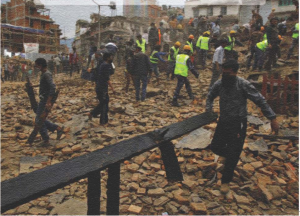

The devastating earthquake in Kathmandu that caused series of tremors in the National Capital Region over two days towards the end of last month came as a major jolt of realisation and put the spotlight on structurally unsafe buildings in the area. Though the developers across the board utilised the opportunity to reassure people that everything is hunky dory with their projects and the authorities went into an overdrive on safety aspects of buildings, the realities are too harsh to be ignored.
And the reality is about 60 to 70 per cent of Delhi is likely to be destroyed if an earthquake over the intensity of six on the Richter scale strikes the national Capital. Besides, as per a study by the National Disaster Management Authority in 2007, it was noted that neighbourhoods in Delhi most susceptible to damage include areas that lie about two miles on either side of the Yamuna river, the southwestern outskirts of the city known as the Chhatarpur basin and developing areas like Gurgaon, Noida and Ghaziabad. Without any intent of painting a doomsday scenario, one cannot be oblivious to the fact that Delhi and NCR come under Seismic Zone IV, which is considered to be the ‘High Damage Risk Zone.'(See chart alongside)There are a whole lot of unauthorised constructions all along the region, for which people themselves are Moreover, development authorities have no means to corroborate claims of developers that they are using quality building material or proper earthquake-resistant techniques to build. They only require project design/layouts to be vetted by the Indian Institute of Technology, Delhi. Once that is done, the authorities give their nod provided the project complies with relevant Acts.
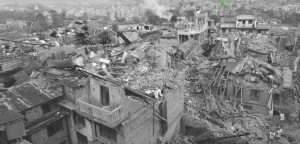

Moreover, development authorities have no means to corroborate claims of developers that they are using quality building material or proper earthquake-resistant techniques to build. They only require project design/layouts to be vetted by the Indian Institute of Technology, Delhi. Once that is done, the authorities give their nod provided the project complies with relevant Acts.
Without any intent of painting a doomsday scenario, one cannot be oblivious to the fact that Delhi and NCR come under Seismic Zone IV, which is considered to be the ‘High Damage Risk Zone.'(See chart alongside)There are a whole lot of unauthorised constructions all along the region, for which people themselves are to be blamed. And most of the private constructions are carried out by masons and labourers without the expertise of structural engineers being involved. In the absence of specific guidelines for earthquake-resistant buildings, the authorities have surely laid down a few parameters and a majority of developers do tend to comply with these.
Notwithstanding the above listed factors, the Nepal quake and its aftershocks in Delhi-NCR have certainly brought to the fore many a disconcerting fact and a dispassionate look at them is essential at this juncture. Sandeep Donald Shah, Country Head of Miyamoto International, a structural engineering firm, was recently quoted in the media reports as saying that all buildings in the NCR are designed to the lowest category of earthquake performance, which is collapse prevention.
There are four categories of earthquake resistant buildings: Earthquake Resistant Operational, Earthquake Resistant-Immediate Occupancy, Earthquake Resistant-Life Safety and Earthquake Resistant Collapse Prevention. “While these buildings (which meet the minimum standards under Indian rules) will not fall, they will be rendered unusable,” said Shah.
Shah also said the Bureau of Indian Standards had admitted that they do not have a code for high-rise buildings. “They have said they will now come up with a new code in 2015,” he said. This is after Shah filed a public interest litigation seeking directions from the court regarding educating the public about the different kinds of earthquake resistance in buildings. The Supreme Court had in December 2014 passed an order for buildings housing more than 100 people and those more than five-storey high to have an engraved metal plate declaring the structure as ‘earthquake resistant.’ The Government, however, did not do anything, he said.
“Buyers should check if the plan of the flat they are buying is approved by the Authorities, then they can be assured that the structure will be earthquake-resistant. Because we approve the plan only if it adheres to the earthquake resistant norms.”
RAMARAMAN Chairman, Naida, Greater Noida Authorities and YEIDA
“Buyers should not doubt the safety of a Noida-approved building structure because the Authority allows additional floors only on those buildings, which have a raft and column that can bear extra floors”.
MANOJ KUMAR RAI OSD, Noida Authority
“In the case of very highrise buildings, there is a need for having a separate code which is not present in India at the moment…There is no way that standards made for 9-10 storey buildings should be used for mid and high rise buildings.”
MANISH KUMAR MD (Strategic Consulting), JLL India
As per a study by the National Disaster Management Authority in 2007, neighbourhoods in Delhi most susceptible to damage include areas that lie about two miles on either side of the Yamuna river, the southwestern outskirts of the city known as the Chhatarpur basin and developing areas like Gurgaon, Noida and Ghaziabad. • Development authorities have no means to corroborate claims of developers that they are using quality building material or proper earthquakeresistant techniques to build. They only require project design/layouts to be vetted by the Indian Institute of Technology
Most of the safety experts also point out the absence of separate guidelines in the country for high-rise buildings, which are a norm in big cities nowadays. According to Chandan Ghosh, Professor and Head of the Geo-hazard Risk Management Division and IT section of the National Institute of Disaster Management, “”Most constructions in the country are in danger as basic norms are flouted. If there are 50 parameters to be checked, only two are being checked. Builders don’t use quality material as per BIS”. Manish Kumar, MD (Strategic Consulting) at JLL India, however, said, in terms of structural safety standards, all builders are adhering to the standards prescribed by the Government. “But in the case of very high-rise buildings, there is a need for having a separate code which is not present in India at the moment,” he said. “There is no way that standards made for 9-10 storey buildings should be used for mid and high rise buildings.” Real estate developers, on their part, insist there was nothing to worry. Getamber Anand, President of the Confederation of Real Estate Developers Associations of India (Credai), said, “15 1893 is the Indian code revised in 2002 after Gujarat earthquake duly considering the structural failures witnessed. The present buildings are being designed based on IS 1893 and it provides design for even 30 storeys and above”. Echoing his views, Manoj Gaur, MD, Gaursons India Ltd. and President of Credai NCR, said, “All measure are taken care of as we all understand that Delhi NCR people are living on Seismic IV zone and for that reason we as a responsible developer have to abide by the laws made to make sure the buildings can withstand a fair amount of jolts. He told Realty & More, “Norms are related to the soil-testing, concrete to be used, the mixture of cement and many other measures that every developer has to follow.”
“IS 1893 is the Indian code revised in 2002 after Gujarat earthquake duly considering the structural failures witnessed. The present buildings are being designed based on IS 1893 and it provides design for even 30 storeys and above”.
GETAMBER ANAND President, Credai
With a sense of pride, Gaur proclaimed, “1 must say that the buildings developed by us are of superior quality and safer than the builder flats that are coming up in all corners of Delhi NCR.”
Deepak Kapoor, President, Credai Western UP, shared with Realty & More that, “Every developer associated with Credai has appointed well-known architects and structural consultants, who in turn design each and every building as per National Building Code. So we can assure that all our buildings are structurally safe and all these structural designs are duly vetted by senior and learned professionals from liT Delhi, liT Roorkee and/or similar institutions”.
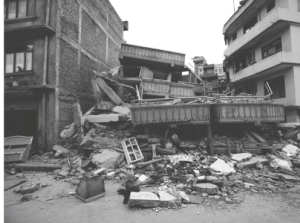

Kumar also said that stricter compliance by the authorities will instill confidence in the people. “Besides, old housing societies must be encouraged for redevelopment. The authorities, developers and buyers have to cohesively work towards ensuring a safe Delhi,” he told Realty & More.
‘All measure are taken care of as we all understand that Delhi NCR people are living on Seismic IV zone and for that reason we as a responsible developer have to abide by the laws made to make sure the buildings can withstand a fair amount of jolts.”
MANOJ GAUR President, Credai NCR
“This has made buyers more cautious in ensuring earthquake-resistant structures and even questioning their builder to have the same and other precautionary measures. What needs to be curbed is the unorganised construction that’s happening across the Capital.”
ANIL KUMAR CEO & JMD, Ansal API
“Every developer associated with Credai has appointed wellknown architects and structural consultants, who in turn design each and every building as per National Building Code. So we can assure that all our buildings are structurally safe.”
DEEPAK KAPOOR President, Credai Western UP
‘All suitable and required measures have been taken while designing the structural parts of the building i.e. columns, beams and slabs thereby strengthening the same with adequate quantity of steel and well-designed concrete mixes.”
SANJAY RASTOGI Director, Saviour Builder
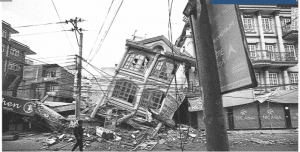

Anil Kumar Tulsiani, CMD, Tulsiani Constructions & Developers Ltd., also told Realty & More that the modern construction in the country is taking care to avert earthquake disasters through seismic proof buildings. “It is the duty of the developers that they make such buildings to minimise the loss during such disasters, which ultimately leads to loss of life and sends area back economically, he said.
Anubhav Jain, Director, Group Silverglades, said, “There is a need to enforce requisite quality parameters used in construction of multi-storey buildings. This is particularly important in case of buildings that are planned to come up in earthquake-prone areas like Delhi-NCR. Also, stopping unorganised construction and eviction from unsafe buildings are some major concerns which require quick action before tragedy like Nepal occurs again.”
Since earthquake-resistant structures are mandatory for developers in getting building approvals, hence Prashant Tiwari, Chairman of Prateek Group advises “customers to buy buildings! apartments from reputed developers only who have to strictly adhere to earthquake seismic zone codes.” He said people should “avoid buying properties from unorganised and unprofessional builders.
” Developers’ assertions aside, the tremors have also spurred the various state governments and respective development agencies into action. On their part, they too have expressed confidence about their preparedness to respond to any calamity. The Delhi Government has said it has already made a state disaster management plan while district-wise plans are also being framed. Though seismic retrofitting of old structures in Delhi is still pending, the Government said it has already identified vulnerable areas where specific plans for disaster management will be put in place.
The Delhi Government has said it has already made a state disaster management plan while district-wise plans are also being framed. Though seismic retrofitting of old structures in Delhi is still pending, the Government said it has already identified vulnerable areas where specific plans for disaster management will be put in place.
“It is the duty of the developers that they make such buildings to minimise the loss during such disasters, which ultimately leads to loss of life and sends area back economically, he said.
ANIL KUMAR TULSIANI CMD, Tulsiani Constructions & Developers Ltd
“There is a need to enforce requisite quality parameters used in construction of multi-storey buildings. This is particularly important in case of buildings that are planned to come up in earthquake-prone areas like Delhi-NCR.”
ANUBHAV JAIN Director, Group Silverglades
The Noida Authority is planning to frame building by-laws for the villages that are situated in the city after rising complaints of encroachment and haphazard development. Officials said once the by-laws are framed, a comprehensive survey of the villages will be undertaken to check flouting of building norms. The violators will be fined as per the rules, they said.
“Broadly speaking, these vulnerable areas comprise unauthorised colonies and residential buildings concentrated in North and North-East Delhi while the Walled City area is another place at risk if an earthquake occurs,” said a senior Delhi Government official. The Government plans to reach out to the community in these areas, identify safe buildings where people can be moved in case of a disaster, and mark disaster lanes in consultation with the traffic police to regulate traffic accordingly.
The Noida Authority is planning to frame building by-laws for the villages that are situated in the city after rising complaints of encroachment and haphazard development. Officials said once the by-laws are framed, a comprehensive survey of the villages will be undertaken to check flouting of building norms. The violators will be fined as per the rules, they said. Noida’s 82 urban villages that are home to hundreds of tall residential and commercial towers are vulnerable to natural disasters. According to officials and experts, these urban villages have been built by flouting mandatory building by-laws. Following the recent tremors, the Noida Authority issued a warning that no fresh building designs would be sanctioned if a builder fails to follow norms drawn up to make buildings earthquake-resistant.
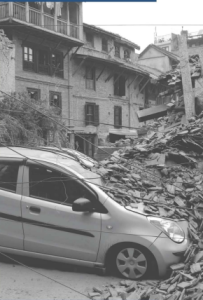

The Gurgaon region, as also the neighbouring areas of Manesar and Sohna, which have seen a large number of high-rises coming up in the last one decade, falls in high risk Seismic Zone IV making it highly vulnerable to earthquakes. The major tectonics features affecting Gurgaon are the Sohna Fault, Junction of Aravali and Alluvium near Delhi, Moradabad Fault, Delhi-Moradabad Fault and Delhi-Haridwar Fault. According to an estimate, Gurgaon alone has more than 1,000 high-rises.
After the recent tremors, the Haryana Government issued instructions to all chief engineers and planners in the state to ensure that all building norms are followed.
“Customers should buy buildings/ apartments from reputed developers only who have to strictly adhere to earthquake seismic zone codes.” PRASHANT TIWARI Chairman, Prateek Group
The Gurgaon region, as also the neighbouring areas of Manesar and Sohna, which have seen a large number of high-rises coming up in the last one decade, falls in high risk Seismic Zone IV making it highly vulnerable to earthquakes. The major tectonics features affecting Gurgaon are the Sohna Fault, Junction of Aravali and Alluvium near Delhi, Moradabad Fault, Delhi-Moradabad Fault and Delhi-Haridwar Fault.
-



 Interviews4 weeks ago
Interviews4 weeks agoHigh Rental Yield, Price Appreciation, Stable Growth, Make Sydney an Ideal Realty Investment Option: Haansal Estate
-



 News2 weeks ago
News2 weeks agoKW Delhi 6 Mall Onboards New Brands
-



 News3 weeks ago
News3 weeks agoManasum Senior Living Launches IKIGAI GOA, A Senior Living Community in North Goa, in collaboration with Prescon Homes
-



 News2 weeks ago
News2 weeks agoGodrej Properties Sells Rs 3k cr+ Homes of Godrej Zenith, Gurugram, within 3 days
-



 News3 weeks ago
News3 weeks agoBridging India Divide: Top 5 Tier- 2 Cities to Focus On
-



 News2 weeks ago
News2 weeks agoCommercial Realty Gets Tech Savvy: Fast Construction, Enhanced Convenience
-



 News3 weeks ago
News3 weeks agoMultipoint Connection – A Definite Boon
-



 News2 weeks ago
News2 weeks agoRBI’s Status Quo on Key Policy Rates to Help Maintain the Real Estate Growth Momentum, Say Industry Stalwarts
























